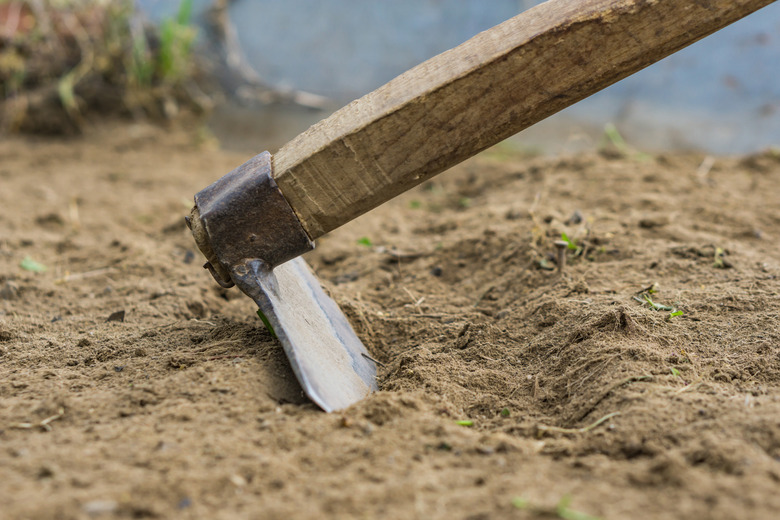Farming Tools In Ancient Egypt
The Ancient Egyptians famously farmed the black soils of the Nile Delta: an area with little rainfall that was irrigated by seasonal floodwaters. In the Nile flood plains, the highest ground was considered the best for agriculture. Ancient farmers dwelling in Egypt used a number of tools to farm this land, many of which are still a part of agriculture and gardening (albeit in more modern forms).
TL;DR (Too Long; Didn't Read)
Ancient Egyptian farmers used a number of tools to work the soil of the Nile Delta. Some of these are in use today, like hoes, sickles, hand plows, pitchforks and sieves. A lesser-known tool called the shaduf, still used in some parts of the world, was important for irrigation.
Hoe and Sickle
Egyptian farmers used a hoe to break up large clods of earth churned up by the plow. They also used hoes when tending growing crops. Examples of this ancient Egyptian tool discovered during archaeological excavations show that it was typically a wooden handle and blade bound together with rope. Photographs of a hoe from the Carnegie Museum show a typical example: an acute angle between the handle and the blade and the positioning of the rope binding make the tool resemble a letter A.
A sickle typically has a short handle and a crescent-shaped blade and is used for reaping during harvest. In ancient Egypt, the blade was made of wood rather than iron. The wood was glazed and then honed to create sharp edges.
Hand Plow
Ancient Egyptians may have occasionally used oxen or donkeys to help with plowing, but it appears that the majority of farmers relied on their own strength. The type of plow used was made of wood and bronze. An example on display at the British Museum that dates from the New Kingdom, between 1550 and 1070 B.C., shows a long wooden handle with two wooden blades at the bottom, tipped with bronze to help turn the soil.
Pitchfork and Sieve
After harvesting, the stalks of cereal crops were bound and taken to a threshing area. Here, the harvest was spread out and trampled by donkeys. Women separated the grain from the chaff using wooden pitchforks. They then used sieves made from reeds and palm leaves to separate the larger pieces of chaff from the grain.
The All-Important Shaduf
A shaduf was an irrigation tool used to bring water from the Nile to the crops. It is still used today in Egypt and India. The shaduf consists of a long pole with a bucket-like device attached to one end and a weight attached to the other. The pole is balanced across upright wooden poles and resembles a seesaw. Pulling the rope from the long end fills the bucket with water. The weight on the other end of the pole brings the bucket up when it is full.
Cite This Article
MLA
McKenzie, Eleanor. "Farming Tools In Ancient Egypt" sciencing.com, https://www.sciencing.com/farming-tools-ancient-egypt-6893/. 25 April 2018.
APA
McKenzie, Eleanor. (2018, April 25). Farming Tools In Ancient Egypt. sciencing.com. Retrieved from https://www.sciencing.com/farming-tools-ancient-egypt-6893/
Chicago
McKenzie, Eleanor. Farming Tools In Ancient Egypt last modified March 24, 2022. https://www.sciencing.com/farming-tools-ancient-egypt-6893/
